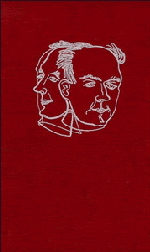Book contents
- Frontmatter
- Contents
- NEW MUSICAL RESOURCES
- PART I TONE COMBINATIONS
- PART II RHYTHM
- 1 Time
- 2 Metre
- 3 Dynamics
- 4 Form
- 5 Metre and Time Combinations
- 6 Tempo
- 7 Scales of Rhythm
- PART III CHORD-FORMATION
- DEFINITIONS OF TERMS
- A NOTE ON THE TYPE IN WHICH THIS BOOK IS SET
- Notes on the text
- Henry Cowell's “New Musical Resources”
- Index
5 - Metre and Time Combinations
from PART II - RHYTHM
Published online by Cambridge University Press: 05 June 2015
- Frontmatter
- Contents
- NEW MUSICAL RESOURCES
- PART I TONE COMBINATIONS
- PART II RHYTHM
- 1 Time
- 2 Metre
- 3 Dynamics
- 4 Form
- 5 Metre and Time Combinations
- 6 Tempo
- 7 Scales of Rhythm
- PART III CHORD-FORMATION
- DEFINITIONS OF TERMS
- A NOTE ON THE TYPE IN WHICH THIS BOOK IS SET
- Notes on the text
- Henry Cowell's “New Musical Resources”
- Index
Summary
Although it is not in general the purpose of this work to treat of combinations, a grasp of the subject of the combinations of metre and time seems essential to an understanding of metre alone. In order to treat of metre alone, it was necessary to apply the metres to a constant time-unit, a quarter-note being chosen for this purpose. This fixes a definite length of time and definite metres for the completion of any given metrical ratio. For instance, if the ratio is 2:3, the time must be two times three, or six, quarter-notes; and the metres must be a metre of two, or, against a metre of three, or ¾.
If, instead of taking a quarter-note as a time-unit, we choose notes of other time-values, it becomes possible to express any metrical ratio in any given length of time and in any metre; which not only gives greater flexibility, but also reduces the undue length of time it takes to complete certain ratios in the system of metre alone. It can be seen that in employing this method, not only a metrical relation must be considered, but also, since the simultaneous metres may be built on different timevalues, the relation between these various time-values must be taken into account.
When a metre of two is spoken of, it is meant that as a metrical unit an accented note is followed by an unaccented note. Similarly a metre of three means that an accented note is followed by two unaccented notes. The kind of notes on which these accents fall, is not a matter of metre, but of time. When it is desired to form a metrical ratio one of the component numbers of which is two, it does not necessarily follow that a metre of two is to be used. What should be remembered is that a certain length of time must contain two metrical accents, one at the beginning of the time period and one on the first note after half the time period has elapsed.
Information
- Type
- Chapter
- Information
- New Musical Resources , pp. 85 - 89Publisher: Cambridge University PressPrint publication year: 1996
